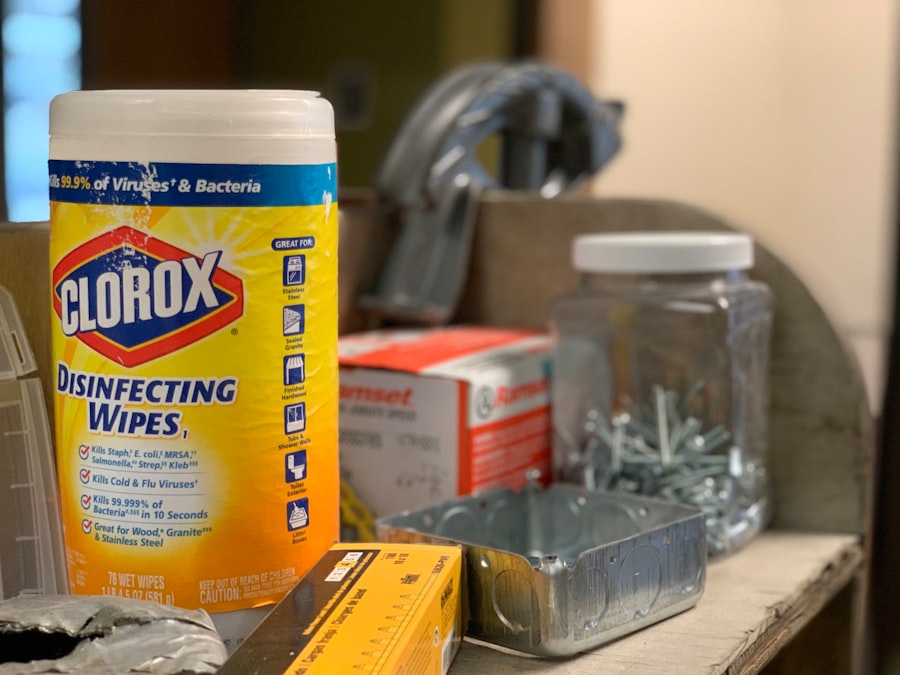Upholstery cleaning is often an overlooked aspect of home maintenance, yet it plays a crucial role in preserving the aesthetic appeal and longevity of your furniture. Over time, upholstery can accumulate dust, dirt, allergens, and stains, which not only detracts from its appearance but can also lead to health issues for the occupants of the home. Regular cleaning helps to maintain the fabric’s integrity, ensuring that your furniture remains comfortable and visually appealing for years to come.
Moreover, clean upholstery contributes to a more inviting atmosphere in your living space, making it essential for both personal enjoyment and social gatherings. In addition to enhancing the visual appeal of your furniture, upholstery cleaning is vital for maintaining a healthy indoor environment. Dust mites, pet dander, and other allergens can become trapped in the fibers of your upholstery, leading to respiratory issues and allergies.
By investing in regular upholstery cleaning, you can significantly reduce these harmful particles, creating a healthier living space for you and your family. Furthermore, clean upholstery can help eliminate unpleasant odors that may have built up over time, ensuring that your home smells fresh and welcoming.
Key Takeaways
- Regular upholstery cleaning is important for maintaining a clean and healthy home environment
- Professional upholstery cleaning can extend the life of your furniture and improve its appearance
- When choosing an upholstery cleaning service, consider their experience, reputation, and the cleaning methods they use
- Understanding the upholstery cleaning process can help you make informed decisions and ensure the best results
- Regular vacuuming, spot cleaning, and professional maintenance can help maintain clean upholstery and prevent stains
Benefits of Professional Upholstery Cleaning
Engaging a professional upholstery cleaning service offers numerous advantages that go beyond what regular vacuuming can achieve. One of the primary benefits is the expertise that professionals bring to the table. Trained technicians understand the various types of fabrics and materials used in upholstery and know how to treat each one appropriately.
This knowledge ensures that your furniture is cleaned effectively without causing damage, preserving its quality and extending its lifespan. Another significant benefit of professional upholstery cleaning is the use of advanced equipment and cleaning solutions. Professionals have access to high-powered steam cleaners and specialized products that can penetrate deep into the fabric fibers, removing dirt and stains that regular cleaning methods may miss.
This thorough approach not only enhances the appearance of your furniture but also helps to eliminate bacteria and allergens, contributing to a healthier indoor environment. Additionally, many professional services offer protective treatments that can help repel future stains and spills, providing an extra layer of defense for your upholstery.
Choosing the Right Upholstery Cleaning Service

Selecting the right upholstery cleaning service is crucial to achieving the best results for your furniture. Start by researching local companies and reading customer reviews to gauge their reputation and reliability. Look for services that specialize in upholstery cleaning rather than general cleaning companies, as they will have more experience and expertise in this specific area.
Additionally, consider asking friends or family for recommendations based on their experiences. Once you have narrowed down your options, inquire about the cleaning methods they use. A reputable service should be transparent about their techniques and products, ensuring they are safe for both your furniture and your family.
It’s also wise to ask about their certifications and training programs for technicians, as this can provide insight into their level of professionalism. Finally, obtain quotes from multiple services to compare pricing and ensure you are getting a fair deal without compromising on quality.
Understanding the Upholstery Cleaning Process
| Step | Description |
|---|---|
| 1 | Pre-inspection of upholstery to identify fabric type and stains |
| 2 | Vacuuming to remove loose dirt and debris |
| 3 | Pre-treatment of stains and heavily soiled areas |
| 4 | Agitation of cleaning solution into the fabric |
| 5 | Extraction of dirt, stains, and cleaning solution using specialized equipment |
| 6 | Drying of upholstery to prevent mold and mildew growth |
| 7 | Post-inspection to ensure thorough cleaning and customer satisfaction |
The upholstery cleaning process typically begins with an initial assessment of the furniture to determine the type of fabric and the extent of soiling. This step is crucial as it allows the technician to choose the most appropriate cleaning method and products for your specific upholstery. Once the assessment is complete, the technician will usually vacuum the furniture to remove loose dirt and debris before applying any cleaning solutions.
After vacuuming, the technician will apply a specialized cleaner tailored to the fabric type. This cleaner is often agitated into the fabric using a brush or machine to ensure it penetrates deeply into the fibers. Following this, hot water extraction or steam cleaning may be employed to rinse away dirt and grime effectively.
The final step typically involves drying the upholstery using fans or air movers to prevent mold growth and ensure that your furniture is ready for use as soon as possible.
Tips for Maintaining Clean Upholstery
Maintaining clean upholstery requires a proactive approach that includes regular care and attention. One of the simplest yet most effective ways to keep your furniture looking its best is through routine vacuuming. By vacuuming your upholstery at least once a week, you can remove dust, dirt, and allergens before they settle deep into the fabric fibers.
Be sure to use an upholstery attachment on your vacuum cleaner to avoid damaging delicate fabrics. In addition to regular vacuuming, consider implementing protective measures such as using slipcovers or fabric protectors. These products can help shield your upholstery from spills and stains while making it easier to clean in case of accidents.
If you have pets or young children, these protective measures become even more critical in maintaining the integrity of your furniture. Lastly, be mindful of how you use your furniture; encouraging guests to avoid eating or drinking on upholstered pieces can significantly reduce the risk of stains.
Common Upholstery Stains and How to Remove Them

Stains are an inevitable part of life when it comes to upholstery, but knowing how to address them promptly can make all the difference in preserving your furniture’s appearance. One common stain is from red wine, which can be particularly challenging to remove. To tackle this stain, blot the area with a clean cloth to absorb as much liquid as possible before applying a mixture of dish soap and water.
Gently dab the stain with this solution until it lifts, then rinse with a damp cloth. Another frequent culprit is grease from food or oils. For grease stains, sprinkle baking soda on the affected area to absorb excess oil before gently brushing it off.
Follow this by applying a mixture of vinegar and water to break down any remaining residue. Always remember to test any cleaning solution on an inconspicuous area first to ensure it does not damage the fabric.
Upholstery Cleaning for Different Types of Furniture
Different types of furniture require tailored approaches when it comes to upholstery cleaning. For instance, leather furniture demands special care due to its unique properties. Regular dusting with a soft cloth is essential for leather maintenance, but when deeper cleaning is needed, a specialized leather cleaner should be used.
Avoid using water or harsh chemicals that could strip away natural oils from the leather. On the other hand, synthetic fabrics like polyester or nylon are generally more forgiving when it comes to cleaning methods. These materials can often withstand steam cleaning or hot water extraction without damage.
However, it’s still important to check care labels for specific instructions regarding cleaning methods and products suitable for each type of fabric.
The Impact of Clean Upholstery on Indoor Air Quality
Clean upholstery plays a significant role in enhancing indoor air quality, which is crucial for maintaining a healthy living environment. Over time, dust mites, pet dander, mold spores, and other allergens can accumulate in upholstered furniture, contributing to poor air quality and respiratory issues among occupants. Regular professional cleaning helps eliminate these harmful particles from your home.
Moreover, clean upholstery can help reduce unpleasant odors that may linger in your living space due to trapped moisture or organic matter within the fabric fibers. By investing in regular upholstery cleaning services, you not only improve the appearance of your furniture but also create a healthier atmosphere for you and your family. Ultimately, clean upholstery contributes positively to overall well-being by promoting better air quality and reducing allergens in your home environment.
In conclusion, upholstery cleaning is an essential aspect of home maintenance that should not be overlooked. By understanding its importance and benefits, choosing the right service provider, and implementing regular care practices, you can ensure that your furniture remains clean, comfortable, and visually appealing for years to come.
